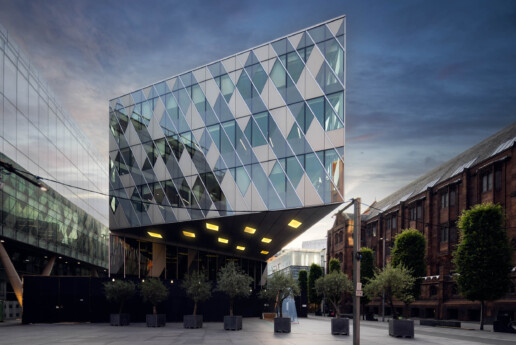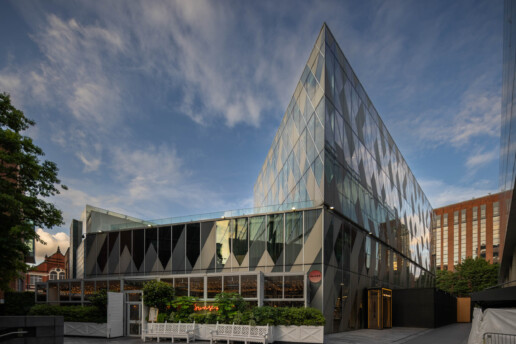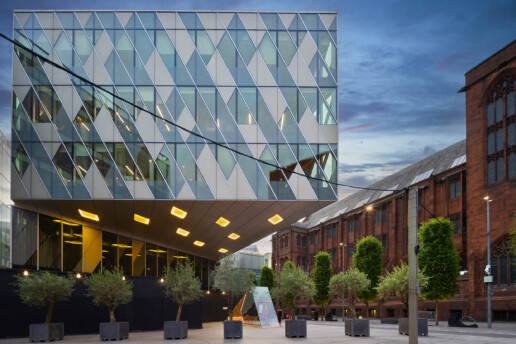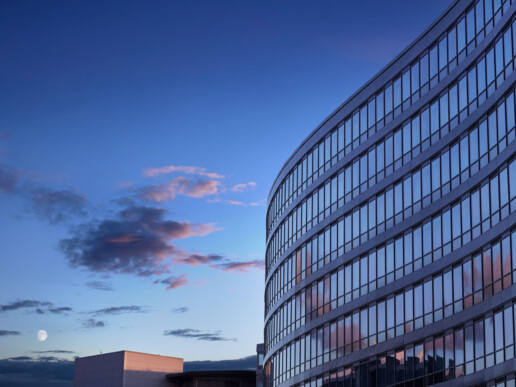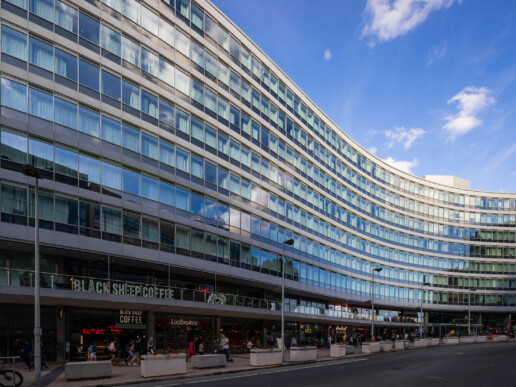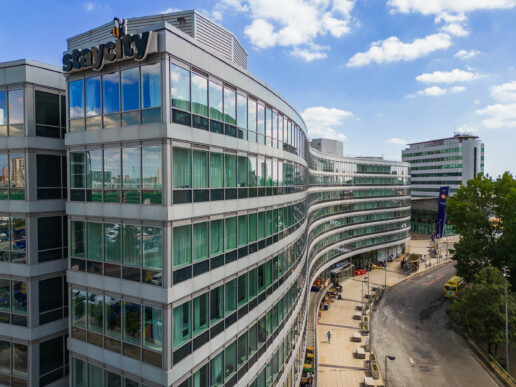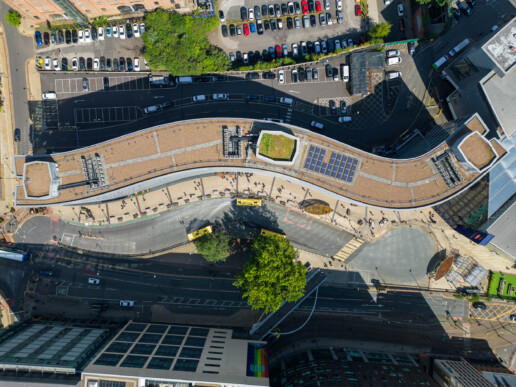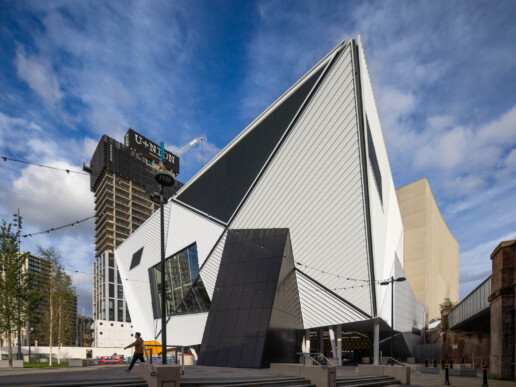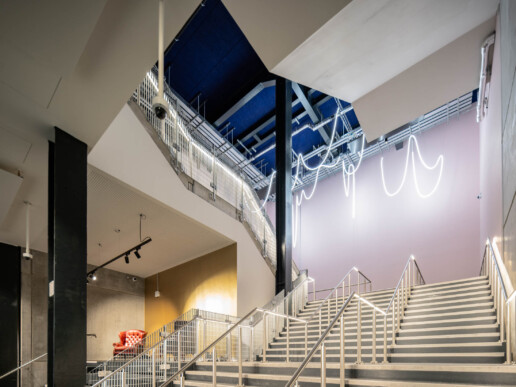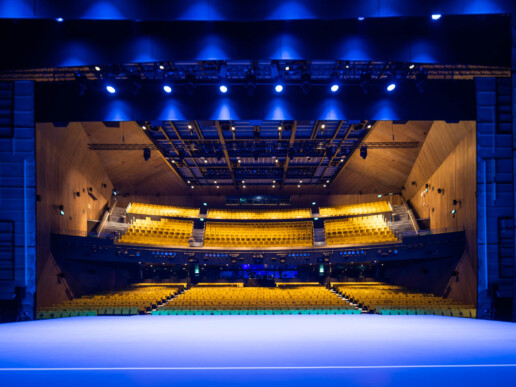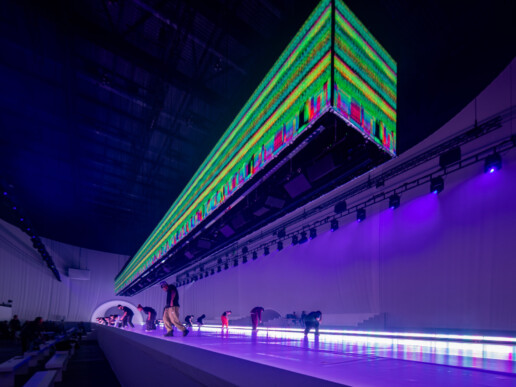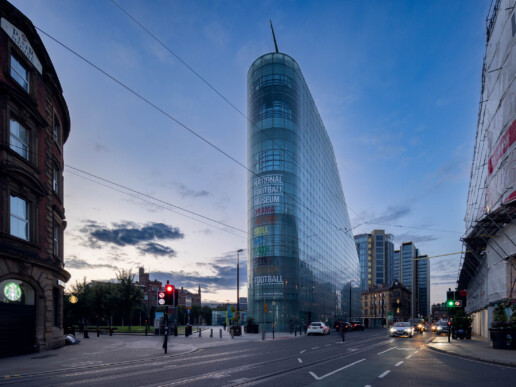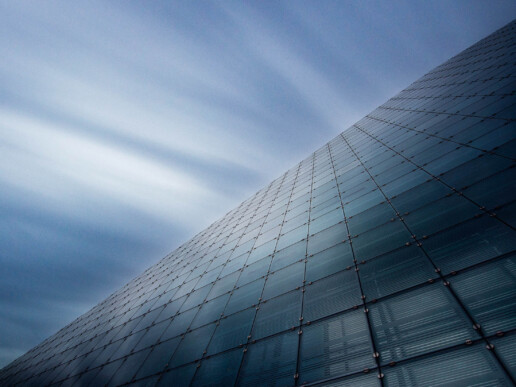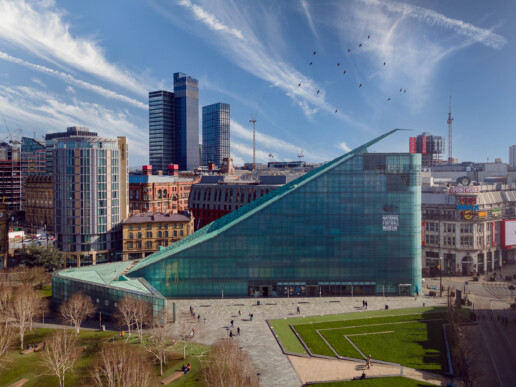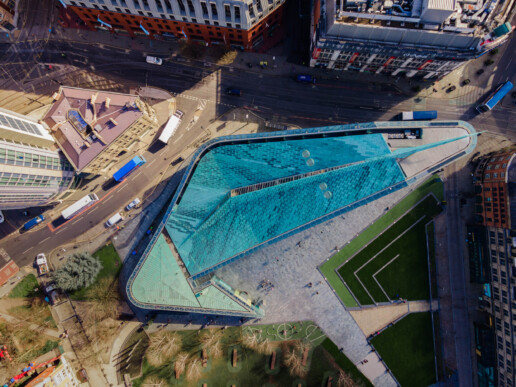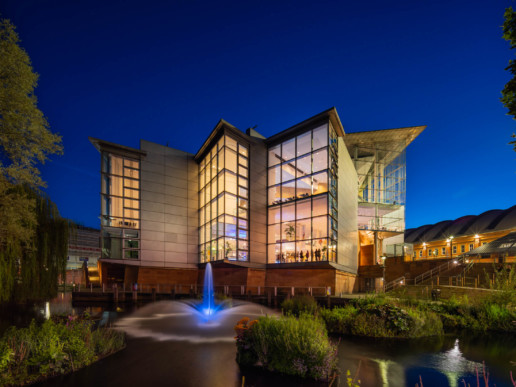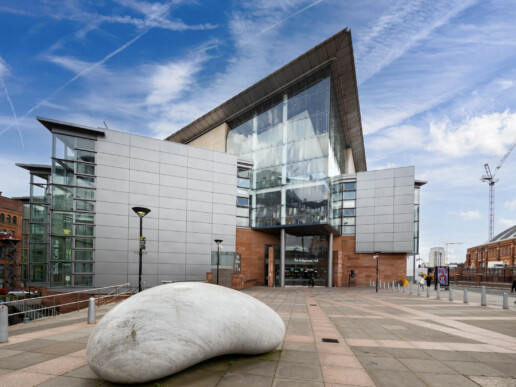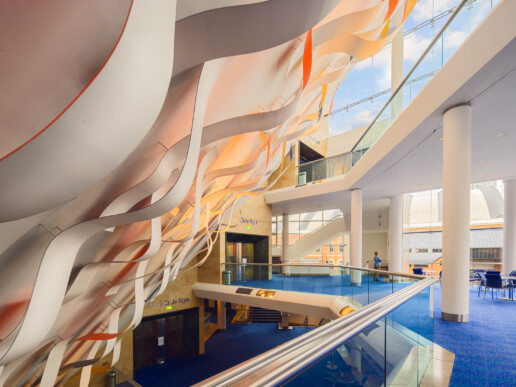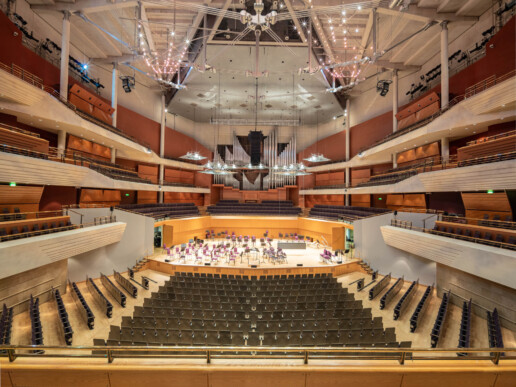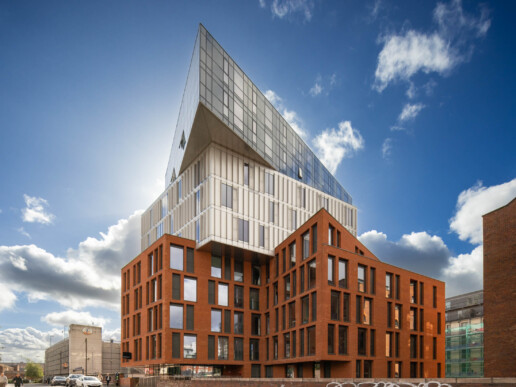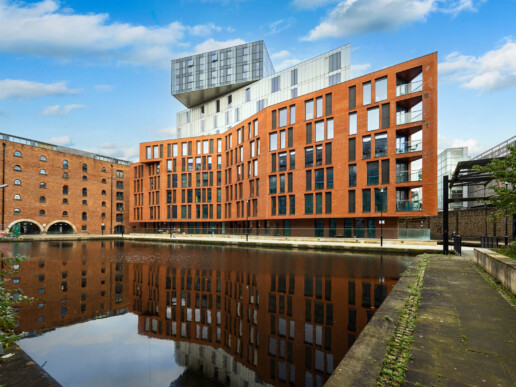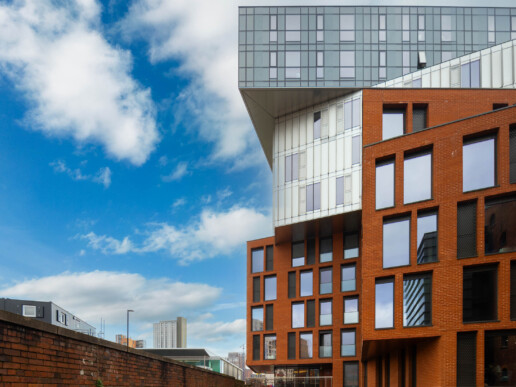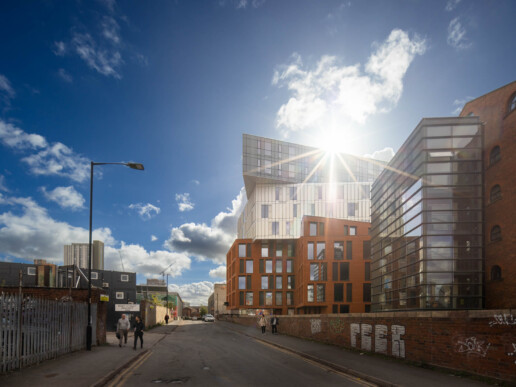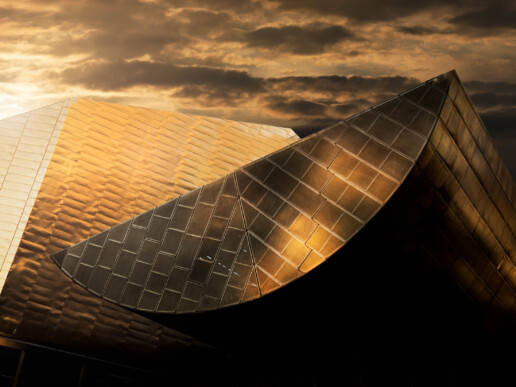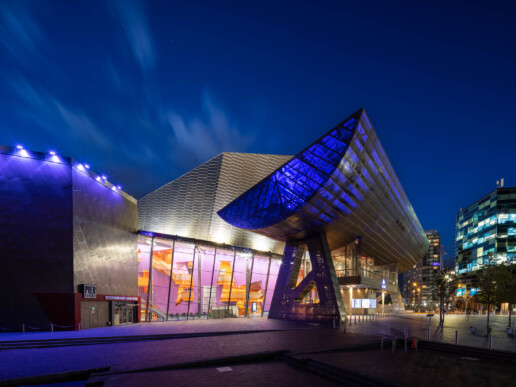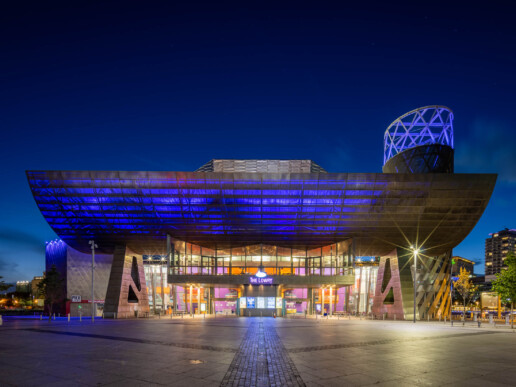When I first arrived in Manchester back in 2007, I expected to see a skyline filled with towering skyscrapers, similar to London. At the time, the Beetham Tower was the only building that stood out to me. Looking up at it was an awe-inspiring experience. I didn’t realize then how much Manchester would grow on me over the years, both as a city and as a subject for my camera. My newfound passion for architectural photography led me to create this post highlighting some of Manchester’s most photogenic buildings – the ones that through my lens stand out as true architectural marvels. Over time, I’ve come to appreciate that Manchester’s beauty lies not in an array of skyscrapers, but in the diverse and evolving architectural landscape of the city center. In this post, I’ll share seven of my favorite architectural gems that capture Manchester’s vibrant spirit.
1 The Avenue
The Avenue is an important new building in Manchester that tells its own story based on its location. Its design is in an important spot that connects the area between the Town Hall and Albert Square to Spinningfields Square. It links together the shopping and business areas to the heart of the city’s government. The shape of the building fits with the intersecting city streets and it has a bold cantilever that stretches out over Deansgate. The striking geometry made it a joy to photograph. The design shows how Manchester’s architecture has evolved. It also connects the different parts of the city visually.
2. Gateway House (Lazy S)
Gateway House, also known as The Lazy S, showcases a unique curvature in its design, distinguishing itself from traditional architectural forms. Designed by Richard Seifert, the building deviates from his typical brutalist style, presenting a more fluid form that has earned it the nickname “Lazy S” due to its shape. This innovative design not only adds a modernistic touch to Manchester’s architectural scene but also offers a visually appealing structure that breaks the mold, signifying a blend of creativity and functionality in urban design. Its located just outside Piccadilly station therefore is great start for anyone wanting to start photographing vibrant Manchester architecture.
3. Aviva Studios
Home of Factory International nestled in the heart of Manchester, is more than just a building—it’s a testament to the seamless blend of aesthetics and functionality, designed to cater to the creative sector. Masterminded by Ellen van Loon of the world-renowned Office for Metropolitan Architecture (OMA), Aviva Studios marks a significant stride as it’s OMA’s first major public project in the UK. The design of Aviva Studios strikes a chord of modernism, with façades of concrete and corrugated metal that boldly stand out amid the refurbished brick warehouses and newly built glass-facing flats, offices, and television studios. Aviva Studios isn’t just a space, but a new cultural epicenter in Manchester, opening its doors as a global destination for arts, music, and culture. If you’d like to find out more about this project (including architectural video) I recently published portfolio page about it.
4. Urbis
Urbis’s design goes beyond its visual appeal, it symbolizes Manchester’s regeneration, rising from the ashes as a structure of hope. Designed by renowned architect Ian Simpson, Urbis opened in 2002 as part of redeveloping Exchange Square after the 1996 bombing. Its journey from housing a museum to becoming the National Football Museum reflects Manchester’s evolving identity. As a photographer, Urbis caught my eye for its geometric intricacies and the way its modern design interacts with the surroundings. The patterns and shapes create visual interest from every angle. I took so many photographs of this structure, yet each time I gain new appreciation for this cultural hub and Manchester’s remarkable resilience.
5. Birdgewater Hall
The classical elegance of Bridgewater Hall serves as a beacon of cultural and musical haven in the heart of Manchester. This architectural marvel was conceived by the esteemed architectural firm Renton Howard Wood Levin (RHWL), known for their profound expertise in the performing arts sector. The structure deviates from conventional construction norms; it’s neither framed in steel nor concrete, but is predominantly formed from solid, reinforced concrete, molded and cast akin to a vast sculpture. One of the hallmarks of Bridgewater Hall’s design is its groundbreaking anti-vibration suspension system. The entire edifice floats above the ground on nearly three hundred earthquake-proof isolation bearings or giant springs. Photographing this structure was pure joy, especially during the blue hour when the serene luminescence of the sky complimented the classical elegance of the hall.
6. Burlington House
Located at Tariff Street, Burlington House embodies modernistic elegance and contributes a contemporary touch to Manchester’s architectural landscape. This 11-story residential development is a part of the broader Piccadilly Basin masterplan, which aims to revitalize post-industrial land and run down buildings into a vibrant and flourishing part of the city center. Designed by the internationally acclaimed architects, SimpsonHaugh and Partners, the building features a sleek, layered look that sets it apart from traditional residential blocks and engages with its surroundings in a dynamic dialogue. This building end up on my list very recently when I noticed its unique look, achieved through a volumetric strategy that divides the building into three distinct layers, each interacting with the site and its surroundings through form, materiality, and character.
7. The Lowry
Situated at Salford Quays in Manchester, The Lowry is a remarkable structure that serves as both a theatre and gallery complex. It contain modern architectural aesthetics while preserving a rich cultural essence. Architecturally, The Lowry boasts a highly sculptural form, decorated with a cladding of stainless steel and glass. Its design is often likened to a ship due to its blend of diverse shapes, especially when viewed from a distance across the Salford Canal. For enthusiasts with keen interest in architectural photography, a visit to The Lowry comes highly recommended. However, the exploration ought not to halt there. The entire Salford Quays area is a treasure of architectural wonders. With a diverse array of buildings and bridges, each bearing its own unique design and character, Salford Quays emerges as a fantastic practice ground to sharpen one’s architectural photography skills. The blend of modern and historic architecture, paired with the reflective waterfront setting, unfolds a wide spectrum of photographic opportunities.
The buildings on this list demonstrate the range of architecture that makes photographing Manchester so rewarding. From sleek modern high-rises to renovated warehouses, each structure has its own character. Civic landmarks exhibit Manchester’s arts and culture while historic sites connect to its past. As the skyline expands, these buildings have already left a mark through their thoughtful designs. Capturing them from new vantage points has been an incredible architecture photography journey. Manchester’s diverse, evolving landscape will continue to provide endless inspiration. This city has proven itself a top destination for capturing creative architectural marvels on camera. My time photographing these gems has cemented my passion for the art of architecture photography.

